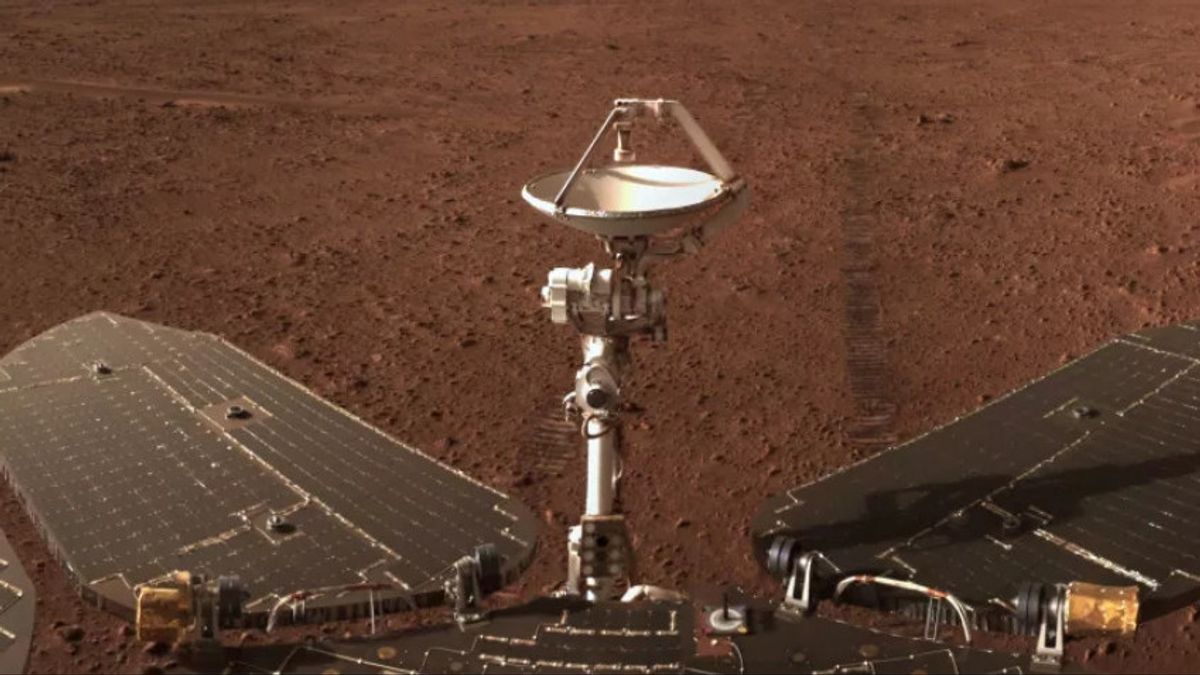JAKARTA - China's Zhurong rover has found evidence to suggest that water once remained on Mars longer than expected. This discovery, of course, could influence plans to one day colonize the Red Planet.
Based on previous research, scientists believed there was liquid water on Mars until about 3 billion years ago, the point at which the dry Amazonian epoch was beginning and the previous geological era of the Hesperian epoch ended on the planet.
"The most significant and novel thing is that we found hydrated minerals at the landing site standing on the young plains of the Amazon, and these hydrated minerals are an (indicator) for water activity like (groundwater) activity," said study lead author Yang Liu of the Chinese Academy. of Sciences (CAS).
"Hydrated minerals, which contain structural water, and ground ice can be used as important water sources on Mars."
After landing on Mars in May 2021, the rover Zhurong began collecting soil sample data. When researchers from CAS and the University of Copenhagen analyzed some of that data, they found evidence of water in samples that were only 700 million years old.
The researchers found hydrated silica and sulfate, similar to hydrated minerals found by other missions studying different regions of the Red Planet.
Minerals are contained in brightly colored rocks, where the color helps indicate their composition. The researchers determined that the rock at this landing site formed a duriancrust layer.
This type of layer can form when large amounts of water, either rising groundwater or melting ice beneath the surface, essentially turns the soil into a hard crust after the water evaporates.
This suggests that the area being explored by Zhurong, Utopia Planitia, is the plain in the large impact crater that was home to large amounts of liquid water at a time when researchers thought the Martian surface had dried up.
The discovery also adds to the growing body of evidence that Mars once went through wet and warm, and dry and cold cycles, rather than making one dramatic climate change last.
"These climatic ebbs and flows may be the result of active volcanoes or impacts from other celestial bodies," said Yang Liu.
Since previous orbiter observations had revealed no sign of hydrated minerals at the landing site, the discovery was quite surprising. That's why exploration using a rover is key.
Planitia's Utopia has been of interest to researchers as some speculate that the region once hosted the oceans.
"Thus, the discovery of hydrated minerals (has) significant indications on the geological and water history of the region and the evolution of the Martian climate," said Yang Liu.
He hopes that in the future Zuhrong can analyze the crater layers on the plains to find more insight into the region's water history. The study has been published in the journal Science Advances.
Finally, according to Yang Liu, this finding also likely indicates the presence of a sizeable water reservoir in hydrated minerals or even ground ice, which could be used by future human explorers during crewed missions to Mars.
The English, Chinese, Japanese, Arabic, and French versions are automatically generated by the AI. So there may still be inaccuracies in translating, please always see Indonesian as our main language. (system supported by DigitalSiber.id)











